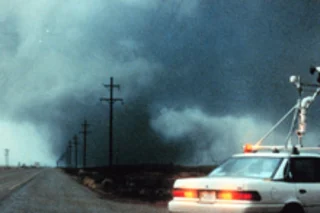Next month, meteorologists will fan out across the U.S. prairie to chase storms, and to try to catch tornadoes in the act of forming.
Pulling together truck-mounted radar, UAVs, wind meters bolted to car roofs, webs of stationary sensors and a generous dash of adventure, 100 scientists with 40 vehicles will spend a month tracking the huge formations of clouds called supercells that occasionally spawn twisters. From a mobile field command vehicle, this army of scientists will conduct a data-gathering war on nature's baddest storms [Wired].
This ambitious effort from the National Oceanic and Atmospheric Administration (NOAA) and the National Science Foundation (NSF) aims to discover exactly what turns a fierce thunderstorm into a twister. The project, called Vortex2, follows the first Vortex project in the mid-1990s, which documented the entire life of a tornado for the first time. The new project will include
"more detailed sampling of a storm's ...














